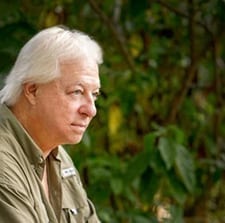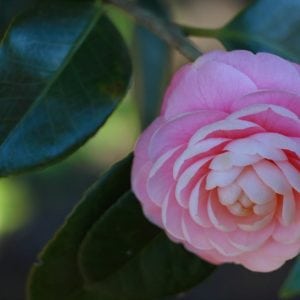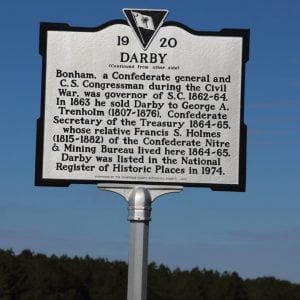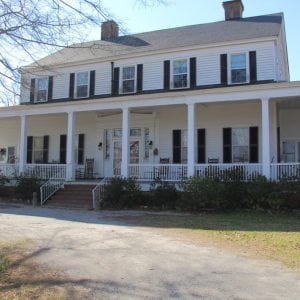Down In Camellia Land, Part One
February 26, 2016By Tom Poland
Across The Savannah
DATELINE I-20 WEST, FEB. 11: I’m making my way to Edgefield to attend Edgefield Camellia Club’s annual Camellia Tea. As soon as I take Exit 18 onto Highway 19, everything changes. I-20’s bland corridor of cars, trucks, and tedium gives way to thick, green cedar groves, sprawling pine-edged fields, stately avenues of oaks, an abandoned home or two, historic plantations, horses, and a curious collection of what appears to be forsaken 18-wheelers in a powerline right-of-way.
My goal is a leisurely one. Saunter around Edgefield a bit and take photos and make mental notes. I will arrange my day to end at Magnolia Dale, circa 1843, site of the first residence in Edgefield and home to the Edgefield County Historical Society. That’s where the Camellia Tea will take place.
It’s one of those days when it’s good to be out and about. Cirrus clouds etch scrimshaw feathers into a deep blue sky. Golden daffodils shine at ground level with backdrops of green fields of rye. Explosions of camellia blooms, I’m told, will add their voices to the chromatic chorus.
My first stop is in Trenton at Darby Plantation, home to Miss Clarice Wise and a camellia garden some eight decades old. I ring the doorbell to no avail. That’s cause Miss Clarice is outside. Spying me, she motions me over to the entrance of her walled camellia garden. “Daddy started it in the early 1950s,” she tells me, adding that the “cold snap” got her camellias, and it’s true. As you can see, freezing temperatures burned a lot of them. Still, pristine blooms live among the beautiful losers. In the blue light of winter, camellia blooms seem a bit subdued but glorious nonetheless. Their colors range from cherry red, lipstick pink, velvety cream, to blood red, all framed by glossy, green leaves.
Out front by Darby’s long driveway stands a marker, as it should. A deep history lives here. Nathan Lipscomb Griffin built Darby in 1842. In 1858 son-in-law, Milledge Luke Bonham, acquired it. Bonham served as a congressman, governor, and Confederate general and lived at Darby before the War and during Reconstruction.
Darby Plantation. It’s here where a Gone With The Wind aside takes center stage. In 1863 Bonham sold Darby to George Trenholm who had a dashing career: blockade-runner. Frankly my dear, it’s believed Margaret Mitchell based Rhett Butler on Trenholm, who went on to become the Confederate treasurer. In the late 19th century, Walter S. Miller purchased Darby whose widow left the property to her nephew, Douglas L. Wise who owned the house until his death whereupon Miss Clarice came into the picture. I photograph the historical marker and leave, catching a glimpse of one lonely daffodil, an early riser, a premature harbinger of the spring that will bring us all such joy.
Into Edgefield Proper
You wayfarers, sojourners, tourists, and nomads heading into Edgefield on Highway 19, the Augusta Highway, as I did, take note. On the left, you’ll pass the National Wild Turkey Federation, a campus of grey buildings. Its mission is to help save wildlife habitat, conserve the wild turkey, and preserve a heritage of hunting.
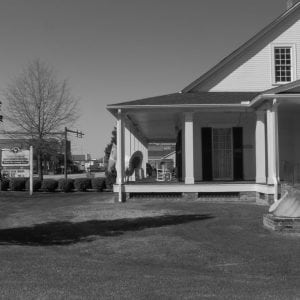 Spiriting beneath a railroad overpass and approaching downtown, I look straight out the windshield and over the square looms the handsome courthouse, a red brick beauty. When you get to Edgefield’s square you can’t miss the large artsy turkeys standing at street corners. The NTWF and turkeys are a big deal not just in Edgefield but in the South. You’ll see two large turkeys on the porch of the Joanne T. Rainsford Discovery Center a short walk from the square. What was once an 1840 farmhouse now houses a theater, interpretative exhibits, and a room dedicated to Strom Thurmond who served in Congress until the tender age of 100. The late Joanne T. Rainsford succumbed to cancer tragically at an early age. She endeared herself to Edgefield for her civic work. For many years, she served as president of the Historical Society,
Spiriting beneath a railroad overpass and approaching downtown, I look straight out the windshield and over the square looms the handsome courthouse, a red brick beauty. When you get to Edgefield’s square you can’t miss the large artsy turkeys standing at street corners. The NTWF and turkeys are a big deal not just in Edgefield but in the South. You’ll see two large turkeys on the porch of the Joanne T. Rainsford Discovery Center a short walk from the square. What was once an 1840 farmhouse now houses a theater, interpretative exhibits, and a room dedicated to Strom Thurmond who served in Congress until the tender age of 100. The late Joanne T. Rainsford succumbed to cancer tragically at an early age. She endeared herself to Edgefield for her civic work. For many years, she served as president of the Historical Society,
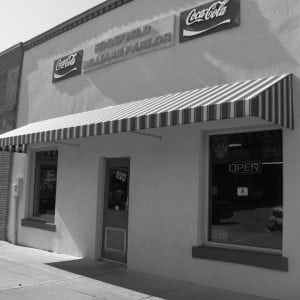 I strolled the square a bit, dropping into the near 100-year-old building that houses the Billiard Parlor, a pool hall since about 1938. “The Pool Room,” as it’s called reputedly serves the best hamburger you’ll ever eat, reason enough to drive to Edgefield lest you be a vegetarian. Make the drive anyway. There’s the Edgefield General Store with its old wagon now rendered into a mega wine rack and Tompkins Memorial Library, home of the Old Edgefield District Genealogical Society. While there, I met a lady from McDuffie County, Georgia. She, as were others, was sorting out her past. Edgefield and genealogy are synonymous.
I strolled the square a bit, dropping into the near 100-year-old building that houses the Billiard Parlor, a pool hall since about 1938. “The Pool Room,” as it’s called reputedly serves the best hamburger you’ll ever eat, reason enough to drive to Edgefield lest you be a vegetarian. Make the drive anyway. There’s the Edgefield General Store with its old wagon now rendered into a mega wine rack and Tompkins Memorial Library, home of the Old Edgefield District Genealogical Society. While there, I met a lady from McDuffie County, Georgia. She, as were others, was sorting out her past. Edgefield and genealogy are synonymous.
The Edgefield Courthouse, unlike so many others, never burned, and that scalawag Sherman never passed through here. The records down here sure do stack deep. If you have family connections to Edgefield as others and I do, the Courthouse and archives next door are where you can research your family’s genealogy. You readers unsure of your roots. Here’s the place to begin sorting them out.
Edgefield, going way back in time, seems to be a point of westward dispersion for many, and Edgefield, thanks to its vast records, gets a lot of tourism based on researching ancestors. Edgefield County Archivist Tricia Price Glenn will tell you there may be millions of records here. They have been growing and growing since 1785. People who know that flock to Edgefield to unravel their past. You’ve heard of eco-tourism. Well, add ancestry-tourism to the lexicon.
As you’ll see in Part Two of “Down In Camellia Land,” Edgefield is a happening place. So happening, in fact, that two fellows ambled into the Edgefield General Store with a freshly found intact pot made by Dave the Slave. “We got a pot for sale,” they say. I knew enough to keep my mouth shut. “It’s one his pots, all right,” said one fellow. “But he didn’t sign it,” said the other.
And it was at the Old Edgefield Grille where I met Janice and Harriett. What a conversation we had. “Now don’t put that in a book,” they admonished me more than once.
And, earlier I walked into Carolina Moon Distillery where Martha and I cooked up a little prank on the lady at Discovery Center and then, too, there’s the reason for my journey, the Camellia Tea.
Stay tuned. The week will quickly pass.
All photos by Tom Poland
Visit Tom Poland’s website at www.tompoland.net
Email Tom about most anything. [email protected]
Tom Poland is the author of eleven books and more than 1,000 magazine features. A Southern writer, his work has appeared in magazines throughout the South. The University of South Carolina Press has released his and Robert Clark’s book, Reflections Of South Carolina, Vol. II. The History Press of Charleston just released his book, Classic Carolina Road Trips From Columbia. He writes a weekly column for newspapers in Georgia and South Carolina about the South, its people, traditions, lifestyle, and changing culture.
Sign up here to start your free subscription to MidlandsLife!





